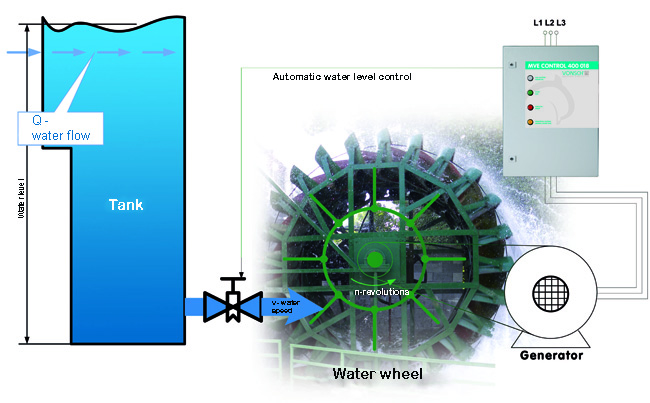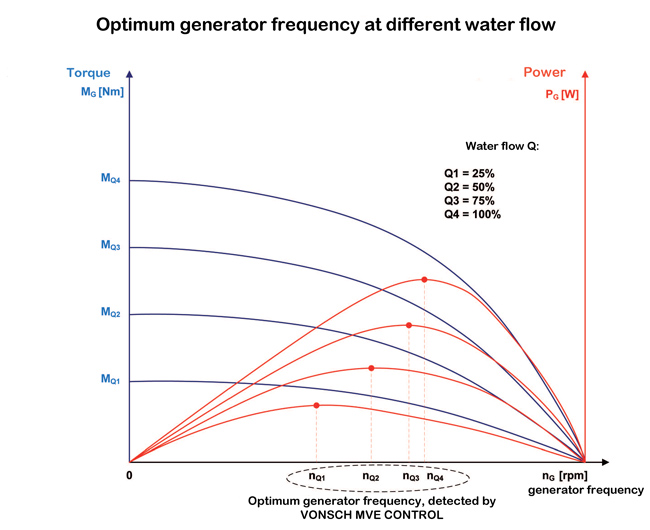Small hydropower plants (SHPP)
Water is easily available and most balanced source of energy, it is one of the cheapest and the most stable renewable energy source in terms of predictability .
In Slovakia and Czech Republic, potential of water energy in mountainous areas is used minimally, which is a shame because the production of electricity of even very
low power "somewhere at the end of the grid" is a great contribution to the network stability. Similarly, waterworks companies rarely use the gravitational potential of drinking
water in mountainous areas to generate electricity. And if properly designed and built – it does not endanger fish or boaters. Energy from water gains incomparable advantages when
comparing to the energy from wind and sun:
- power prediction (water changes very slowly)
- water flows at night, when it is cloudy or in still air
- investments are usually much lower compared to energy from wind or sun
- Small hydro power plant appropriately set into the environment also acts as a tourist attraction (can substitute water wheel water mill), and can help significantly in the municipal energetics
- does not take agricultural land
- ensures that the minimum transmission loss occur
- it can be close to the end consumer
For small hydro power plants (SHPP, MVE is a slovak version of acronym) a device called MVE_CONTROL_LINK is offered.
MVE_CONTROL_LINK is essentially unique power electronics device that operates on the principle of two inverters. One inverter addresses the speed control of water wheel motor
(or turbine) to maximize the power, the other inverter (actively controlled rectifier) supplies the generated power directly to the grid. We work with designers and manufacturers
of small hydro power plants or we deploy MVE_CONTROL_LINK to already existing plants - where we know it will be useful and effective.
MVE CONTROL should be deployed to MVE in cases where the varying power and variable water speed occur, for example:
- Vertical and horizontal water wheels mounted directly in the river, which is energetically favorable in some cases, where it is required to adjust orbital speed of the wheel to instantaneous velocity of water
- Turbines in waterworks placed directly into the flow of drinking water, where MVE_CONTROL_LINK is able to adapt to variable speed and power of the water
- Turbines, which inherently have low efficiency where generated power is much below the rated power
For horizontal wheels directly placed in the river, the production of energy without devices like MVE_CONTROL_LINK is impossible. For example, speed of the water in Danube varies from 1.5 to 2.5 m/s,
so this ratio must be adjusted to the orbital speed of a water wheel - generator. Excellent results were obtained when MVE_CONTROL_LINK was used with vertical water wheel motors, which controlled the
wheel speed (generator) to operate the plant even at low flow rates and water speeds, when the classical solutions with a generator connected directly to the grid cannot be used.
All these adaptations by MVE_CONTROL_LINK are performed by maximization of power - it aically adjusts speed of the generator to the speed and "energy" of water and thus it maximizes the power of MVE_CONTROL_LINK.
Supply of electricity to the grid is achieved by the control of the regenerative inverter, which also includes a network of independent circuits for the work of protections
(current, voltage and frequency). Above the threshold values of output current, frequency and power parameters of the grid, MVE_CONTROL_LINK is disconnected from the grid by
opening the input contactor device. MVE_CONTROL_LINK produces only active power - power factor is equal to 1.


MVE_CONTROL_LINK is available in custom enclosure versions - the basic enclosure can contain other electrical equipment associated with operation of the plant. Power of the generators can be up to 1.4 MW
and a standard induction motor can be used as generator. MVE_CONTROL_LINK can be used to for off-grid power, but in these types of power plants the accumulation of energy
needed to start the system and for excitation of the generator or a self-exciting generator must be used.

